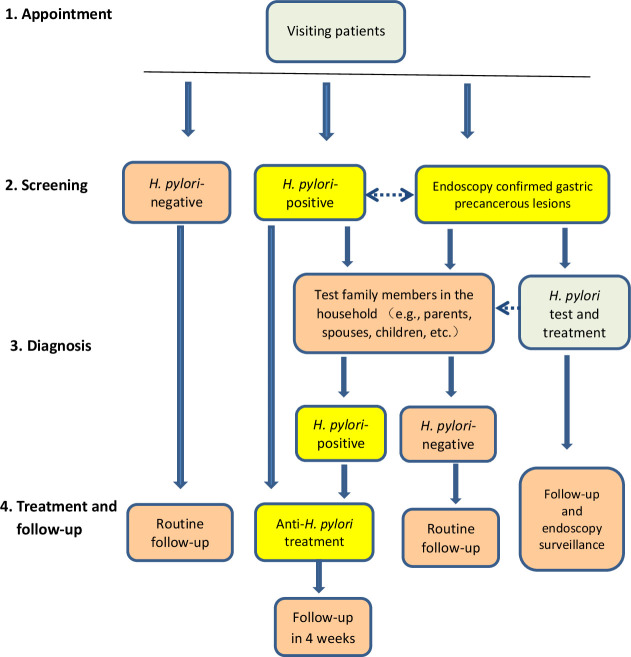Figure 1.
Flowchart of family-based Helicobacter pylori infection control and management. In clinical settings, visiting patients are questioned for symptoms and signs, and Helicobacter pylori infection status is screened by urease breath tests, serological tests or stool antigen tests. If the patient is H. pylori-positive, their family members are recommended to test for H. pylori using one or more of these methods. Family members usually include parents, spouses, children and others living in the same household. The infected patients and family members are advised to treat the infection based on individual condition and follow-up in 4 weeks. If patients or their family members are H. pylori-negative, routine follow-up and no treatment are required. For patients with endoscopy-confirmed gastric precancerous lesions such as atrophy, intestinal metaplasia and intraepithelial neoplasia, H. pylori infection status should be tested, and if it is positive, eradication therapy should be offered and regular endoscopy surveillance should be performed regardless of H. pylori infection status. Dashed line with arrow indicates interaction and close relationship.

